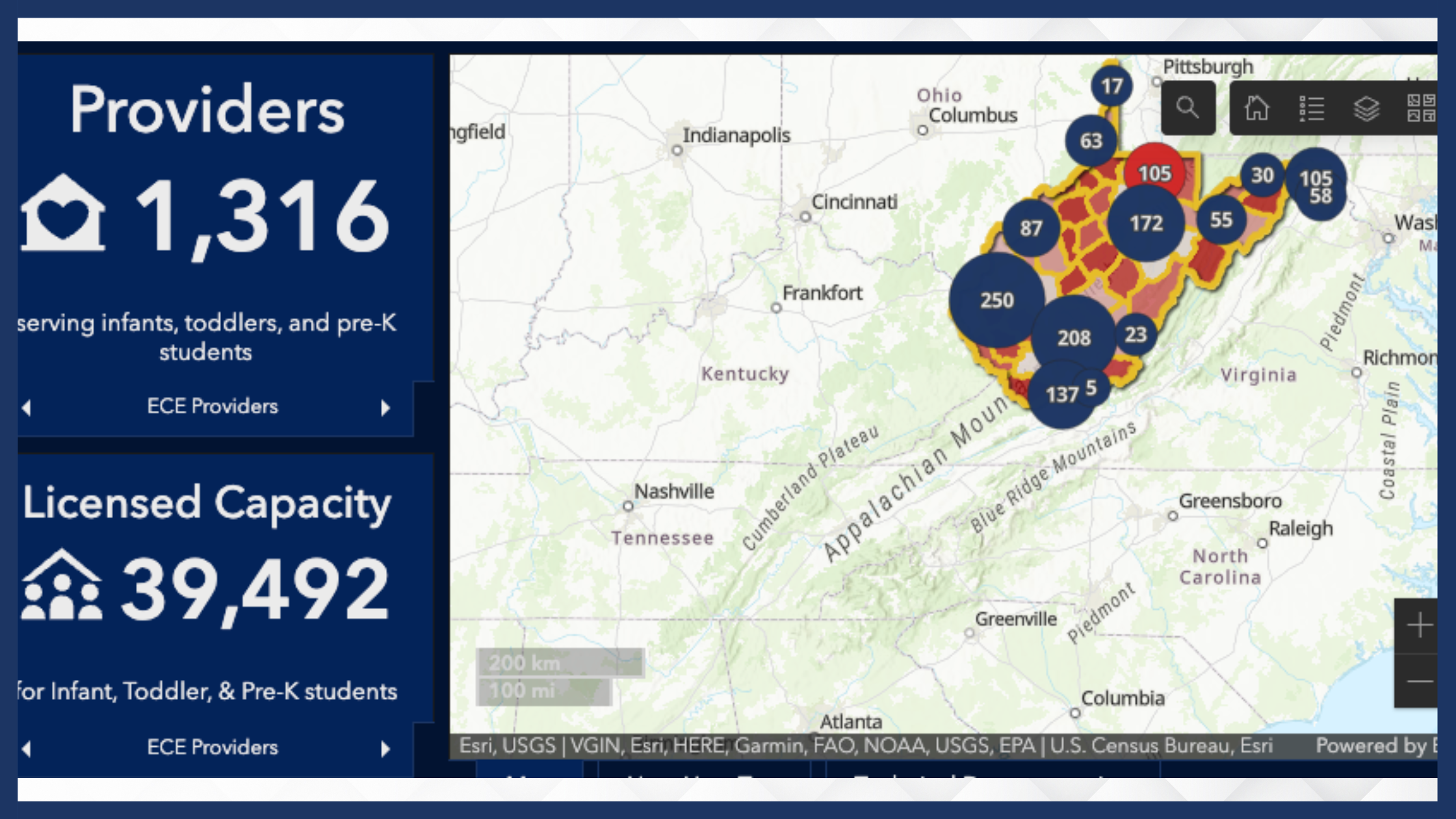-2.png?width=2240&height=1260&name=Untitled%20design%20(26)-2.png) While there wasn’t a major national election in 2023, voters still had the opportunity to weigh in on various state and local offices, as well as ballot measures and propositions regarding child care this year. Even off-year elections provide a valuable opportunity for child care advocates to make their voices heard for candidates and policies that will support the needs of young children and their families.
While there wasn’t a major national election in 2023, voters still had the opportunity to weigh in on various state and local offices, as well as ballot measures and propositions regarding child care this year. Even off-year elections provide a valuable opportunity for child care advocates to make their voices heard for candidates and policies that will support the needs of young children and their families.
Results from the November 2023 election show voters remain interested in finding ways to make child care more accessible and affordable for families and to better support the child care workforce. Below, we share some of our takeaways from the 2023 election year and what it might mean for those impacted by child care policy (spoiler: it’s everyone) in 2024.
A Slight Change in State Political Dynamics
Off-year elections can be an opportunity for political parties to build momentum and shift state political dynamics, as was the case this November. Going into 2024, of the 98 legislative chambers which have partisan control (Nebraska is unicameral and nonpartisan), Republicans will control 57 legislative chambers, compared to Democrats’ 41 chambers—a slight change from the 58-40 split prior to the 2023 election. When all state legislators are sworn in, there will be 40 states with political trifectas, where the same political party controls the governorship and majorities in both chambers of the state legislature— the highest number in the past 30 years. Trifectas give the party full control over the governing process, making it easier for that political party to advance legislation. In 2024, the Republican party will be in full control in 23 states, while the Democratic party will be in control of 17 state governments. This leaves 10 states with divided governments.
Most notably in the November election, Virginia Democrats held onto control of the State Senate and flipped the House of Delegates from Republican to Democratic control. As a result, the Democrats have gained control of the state’s legislature after two years of divided legislative power, leaving Republican Governor Glenn Youngkin in a challenging position to pass his legislative priorities.
Presidential primaries aren’t the only thing to watch for in New Hampshire in the upcoming weeks. The balance of power in New Hampshire’s state House remains very tight, as Republicans hold a slight majority going into 2024, with 198 members to the Democrats’ 196 members. There are currently three open seats, of which two special elections will be held in January 2024 during the presidential primary. A special election date for the third seat is potentially set for early March 2024, but is not yet finalized. While the New Hampshire state government is currently a Republican trifecta, the upcoming special elections hold the potential for a flip in control.
Gubernatorial Elections and Implications for Child Care
Three states (Louisiana, Mississippi and Kentucky) elected or re-elected governors in their most recent round of elections, which will have implications for state-level funding and child care policies. With their current Governor (D) John Bel Edwards being term-limited, Louisiana held a primary on October 14, 2023. State Attorney General Jeff Landry received 52% of the vote, which allowed him to secure his election to governorship without the need for a runoff election. When he is sworn in, Louisiana will change from a divided government to a Republican trifecta. The shift in state political dynamics could impact current levels of support for child care in Louisiana. In 2023, the Louisiana House cut child care subsidy funds, but Governor Edwards restored $7.5 million, for a final total of $52 million—the largest investment of state dollars into the program in well over a decade.
In the two states where incumbent governors were on the ballot, both won reelection. In Mississippi, voters re-elected Republican Governor Tate Reeves to a second term and in Kentucky, Democratic Governor Andy Beshear was re-elected. Governor Beshear prioritized maximizing the use of federal relief funds for early care and education in his 2022-2024 Executive Budget proposal, and recently allocated $50 million in state general funding to support another round of child care stabilization grant funding.
Statewide Ballot Measures
This year, there were 41 statewide ballot measures that were certified for the ballot across eight states—Colorado, Louisiana, Maine, New York, Ohio, Oklahoma, Texas and Wisconsin— the highest number of state ballot measures for an odd-numbered year since 2007. Voters in Texas and Colorado approved child care-related measures, showing an increased interest among voters in finding ways to keep child care costs low and increase supply within their respective states in innovative ways.
- In Texas, child care was on the statewide ballot for the first time under Proposition 2, which asked voters to decide on a constitutional amendment that would allow cities and counties to exempt center-based child care programs from most or all local property taxes if at least 20% of the program’s enrolled children received subsidy. If a local government chooses to grant an exemption, it must waive, at a minimum, half of the center’s appraised property value. While Texas doesn’t have an income tax, property taxes on commercial properties are not capped, meaning annual increases can be significant as property values grow. Proposition 2 passed with 64.8% of Texans voting for the measure and 35.2% voting against. This was no small feat for local advocates and community organizations.
To appear on the ballot before voters, advocates first needed to secure legislative approval. The bill passed and was signed into law in May 2023. After its enactment, advocates got to work right away to garner voter awareness for the measure by creating a political action committee (PAC) to promote the ballot measure, which included social media ads, targeted texts to certain Republican-leaning voters, securing endorsements from the state’s biggest newspapers, and media pushes throughout the summer and fall months leading up to the election. Texas advocacy group Children at Risk shares that every major media market within Texas amplified the importance of Proposition 2 and early childhood education in the month of October. Texas advocates note that the property tax break provides modest but much-needed financial relief to center-based child care providers that will help them remain open and avoid increases in tuition, especially as relief funding expires and there are no further state investments this year. However, getting Proposition 2 passed was just the beginning of the fight for child care advocates in Texas. County officials and councils will still need to approve and implement for child care centers to feel the intended financial relief of Proposition 2. The city of Austin wasted no time and met a mere two days after voting—allowing for city management to begin rolling out processes for eligible providers to claim 100% tax exemptions on their property taxes. Child care changemakers and advocates all over the state continue to push at the local level to get Proposition 2 implemented across more counties for ‘Tiny Texans.’
- Colorado passed Proposition EE in 2020, which allowed the state to raise taxes on tobacco, create a new tax on e-cigarettes and use the excess revenue for early childhood education. This new revenue stream allowed Colorado to launch its universal preschool program in 2023. Revenue from the new e-cigarettes tax exceeded initial forecasting by nearly $24 million, which under Colorado’s constitution requires voters to again vote on a measure on how to use this funding. In 2023, approximately two-thirds of voters approved Proposition II to require the state to retain revenue tax revenue that has already been collected from the sale of cigarettes, tobacco products and nicotine products, rather than refund it to wholesalers and distributors of these products, and spend this tax revenue on the state’s preschool programs.
Local-Level Ballot Measures
- In Denver, Colorado, Proposition 2P was approved with an overwhelming majority (76.9%) of voters to extend the use of 0.15% sales taxes to fund the Denver Preschool Program. This extends the current funding indefinitely (or until such authority is altered or repealed by Denver City Council or Denver voters) beyond the original expiration date of December 31, 2026. This indicates that voters in Denver have a sustained interest in continuing to fund the program.
- In Pueblo, Colorado, voters rejected a measure that would have increased a lodging tax by 1.5% to create a special fund to support families who are not eligible for Colorado’s statewide child care subsidy program. Over half (54%) of voters cast a “no” vote due to tourism concerns.
- Richmond, Virginia, saw 62% of voters reject a measure to approve a destination resort and casino, of which revenue from the annual gaming tax would fund a new Richmond Child Care and Education Trust Fund to expand access to affordable child care and support the construction of new child care centers. In 2021, voters rejected a similar proposal by razor-thin margins (49% for, 51% against).
Local-Level Ballot Measures on Other Election Days
Outside of November, there were three local ballot measures throughout 2023 that addressed child care funding, quality and accessibility.
- In April, 55.92% of voters approved a measure in Anchorage, Alaska, to dedicate the current local marijuana sales tax to providing affordable child care and pre-kindergarten for children in Anchorage. This initiative is anticipated to invest $5-6 million per year and establish an independent advisory board to oversee the use of the funds. Alaska’s Child Care Resource and Referral agency (CCR&R), thread, endorsed this initiative.
- Jefferson City Public School District in Missouri approved Proposition Kids First in April 2023, which would issue $85 million in bonds with bond revenue going to fund school improvements, including the construction of a new early childhood center.
- Voters in Portland, Oregon, overwhelmingly approved Measure A (also known as Portland Children’s Levy Renewal Measure), a five-year renewal of the Portland Children’s Tax Levy that uses funds to support early childhood programs that prepare children for success in school and to make child care more affordable.
All elections provide an important opportunity for voters to have influence on issues that directly impact their communities. Even when Congress is gridlocked, states and local governments can make a significant amount of progress in supporting child care access, affordability and quality. We anticipate that in the upcoming election cycle, child care will continue to be included in candidate platforms and ballot measures, especially as all states expend the final federal relief dollars by September 2024. Missouri, for example, already has a ballot measure certified for the November 2024 general election, which would reduce the level of property tax for center-based child care providers—similar to Proposition 2 approved this year in Texas.
Despite the next major national election being almost a year away, there is no need to wait until election day to show up for child care—become an advocate and stay informed all year long!





